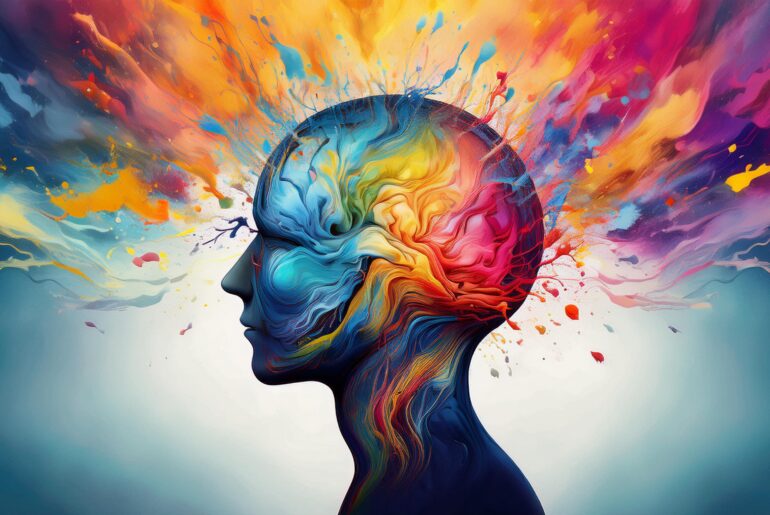“Why do I have to suffer this much?”
This is the most frequent question that we ask ourselves, whenever we are in pain or whenever we are suffering. This pain may be physical, mental, emotional, or social; anything. There can be big sources of suffering, and major emotional hurts that stay with us long past the original wound. Not only this, we always want to run away from our sufferings, because we think that is an easier choice compared to facing them and exploring the ways to deal with them.
Not to forget that pain is inescapable. It is everywhere. And we all continue to suffer. Besides our individual and collective suffering as human beings, there is suffering in nature as well. Natural and unnatural disasters happen daily around the globe like tsunamis, wildfires, famines, and wars. So many innocents die every day because of these causes. In short, they all suffer. Some of these are within our control while others are not.
But without any suffering, can we fully develop as human beings? Just ask yourself.
For instance, only a mother understands the pain and suffering she has to undergo before giving birth to a child. Others can’t even imagine that level of pain too. But when that child is born, no blessing can ever be compared to this for that mother. And that’s how suffering gets turned into a blessing.
The Relation between Suffering and Happiness
Most of us think that in order to be happy we must avoid all suffering, and so we are constantly worrying. We even end up sacrificing all our spontaneity, freedom, excitement, and joy. Also, that happiness belongs to some other time or place. But that isn’t true.
Being able to enjoy happiness doesn’t mean that we have zero suffering. In fact, the art of happiness is related to the art of suffering as well. When we learn to acknowledge, embrace, and understand our suffering, we suffer much less. Not only this, but we’re also able to go further and transform our suffering into life lessons of understanding, compassion, and joy for ourselves and for others.
Just like a rainy day can be both a blessing for some (like farmers) and suffering for others (like the students whose picnic was ruined because of rain), in the same way, what is suffering for you might get converted into a blessing into one or another form, if not now, then some other time.
We must not forget that a lotus always requires mud to bloom. The mud doesn’t smell good, but the lotus smells wonderful. Where there is no mud, there is no lotus. You can’t grow lotus on marble. And to grow such beautiful lotuses, you must know how to make good use of the mud. In the same way, you need to know how to make good use of suffering to enjoy happiness too.
How to become aware of our own suffering?
Suffering can take away our peace, our joy, our stability, and even our ability to eat, move about, or do simple tasks. It can seem insurmountable and we may think that the only thing we can do is either run away from it or give in to it. Therefore, when suffering becomes a block, we should know how to recognize it and embrace it.
1. Acceptance
What do you do if you have a headache?
Do you understand its cause and find the appropriate remedy, or do you just start blaming a headache or other times yourself for it?
When you non-judgmentally recognize and embrace your suffering, this understanding eases your pain and helps you transform it into compassion. Once you have offered your acknowledgment and care to this suffering, it naturally will become less impenetrable and more workable; and then you have the chance to look into it deeply, with kindness, and find out why it has come to you. It is trying to get your attention, to tell you something, and now you can take the opportunity to listen.
You can ask someone to look with you—a teacher, a friend, a psychotherapist. Whether alone or together with your friends, you can explore what kind of roots it has, and what nutrients and habits of consumption have been feeding your sorrow. You can discover how, through looking deeply, you can transform this organic “garbage” into compost, which in turn may become many beautiful flowers of understanding, compassion, and joy.
Also read: The Power of Acceptance
2. Mindfulness
To understand our suffering, we need to look inside us first.
What triggers us and whatnot?
How do we react to those situations?
And many such self-reflecting questions that we need to ask ourselves. Only when we are willing to look deeply into ourselves can we understand the nature of our sufferings.
A human being without understanding is a human being without compassion, utterly alone, cut off, and isolated. To connect with others, however, we first have to be connected with ourselves which can only be done through mindful breathing. And this practice involves not suppressing or denying our emotions but recognizing them mindfully.
3. Stillness and Silence
Often we avoid silence, thinking that we will thereby avoid suffering; but in truth, practicing silence makes our mind come home to ourselves with awareness is the only thing that can help heal our suffering.
Summary
Suffering isn’t some kind of external, objective source of oppression and pain. Rather, it is our awareness of it that helps us grow. It’s quite easy to notice the sufferings around you every now and then. What’s hard is to practice not allowing yourself to be overwhelmed by despair. And for that here is what you need to do whenever you feel overwhelmed. You need to cradle your suffering with a lot of tenderness. After all, this is only suffering which makes you stronger.
Know that one day your pain will become your cure.
Rumi
You just need the power to withstand that suffering. And once you get this power, you rise up and there is no falling behind.
Discover more from Talking Concept
Subscribe to get the latest posts sent to your email.




